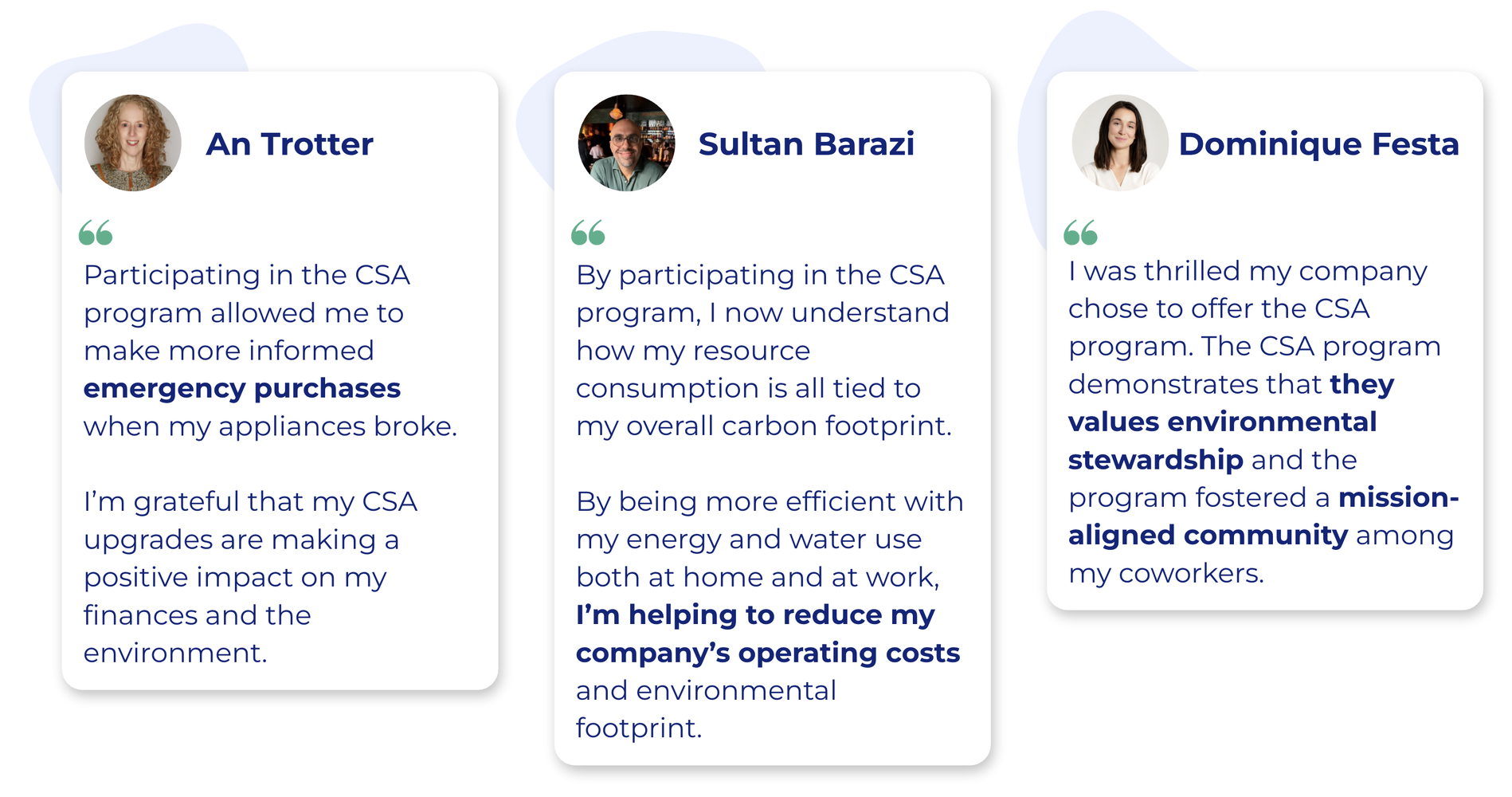Feb 16, 2025 • 4 min read
What Are Scope 3 Category 7 Emissions?

Corporate sustainability efforts are increasingly focused on addressing Scope 3 emissions—the indirect emissions generated across a company’s value chain. Among the 15 Scope 3 categories defined by the Greenhouse Gas Protocol, Category 7 (Employee Commuting) is particularly challenging yet crucial to address in today’s hybrid and remote work environments.
In this blog, we’ll explain Scope 3 Category 7 emissions, their significance in corporate sustainability, and how our Carbon Savings Account® (CSA) provides a groundbreaking solution to mitigate these emissions.
Table of Contents
What are Scope 3 Category 7 Emissions?
Scope 3 Category 7 emissions stem from employee commuting. These emissions include the greenhouse gases (GHGs) generated when employees travel between their homes and workplaces. In traditional work setups, commuting to the office by car significantly contributes to a company’s carbon footprint.
With the rise of hybrid and remote work models, emissions from work-from-home (WFH) energy and water use have also become significant in Scope 3 Category 7. Home heating, cooling, lighting, electronics, and plumbing use associated with remote work are now an important piece to address within a company’s indirect carbon emissions.
Why Reducing Employee Commuting Emissions Matters
Employee commuting emissions are often among the largest contributors to a company’s Scope 3 emissions, making their reduction vital for achieving meaningful climate goals. Beyond environmental considerations, addressing commute emissions helps companies:
- Meet regulatory requirements: Governments are increasingly mandating emissions reductions across entire value chains.
- Enhance ESG ratings: Scope 3 emissions data plays a critical role in environmental, social, and governance (ESG) evaluations. Read more on ESG scores.
- Align with employee expectations: Studies show that employees want their employers to take bold actions on climate change.
Challenges in Addressing Work-from-Home Emissions
Hybrid and remote work have blurred the lines between personal and corporate carbon footprints. Unlike on-site commuting emissions, which can be mitigated through initiatives like carpooling programs, public transit subsidies, or EV incentives, work-from-home (WFH) emissions present unique challenges that stem from the home environment and employee behaviors, including:
- Limited visibility: Companies often lack the tools or access needed to track and quantify the energy consumption of remote workers, making it difficult to measure and manage emissions.
- Employee financial burden: Energy-efficient upgrades, such as smart thermostats or renewable energy plans, typically fall on employees to fund, creating a financial barrier to sustainable choices.
- Lack of engagement: Without direct incentives or clear guidance, employees may not prioritize energy-saving practices while working from home.
The Carbon Savings Account®: A Practical Solution for Scope 3 Category 7 Emissions
The Carbon Savings Account® (CSA) is an innovative employee benefit designed to address the challenge of measuring and reducing both commute and WFH emissions. By empowering employees to make sustainable choices for their homes and transportation, the CSA transforms corporate sustainability efforts.
How the CSA works:
- Contributions: Both employers and employees can contribute funds to the CSA, similar to a health savings account (HSA).
- Eligible purchases: Employees use these funds for eligible home and transportation upgrades, including the following:
- Energy-efficient appliances and lighting
- Electric vehicles and/or chargers
- Public transportation passes
- Heating and cooling solutions
- Water efficiency upgrades
- And more
- Savings and impact: These upgrades reduce utility bills, commuting costs, and carbon footprints for employees, all while automating the measurement and reduction of Scope 3 Category 7 emissions for employers. The CSA delivers long-term benefits to both the employee and employer.
Why the CSA excels:
- Quantifiable results: The CSA allows companies to measure and report Scope 3 Category 7 emission reductions, aligning with Scope 3 reporting requirements.
- Employee engagement: Financial support incentivizes employees to take meaningful action, fostering a deeper connection to corporate sustainability goals.
- Scalable: The CSA is adaptable to various industries, company size, geography, and employee needs, ensuring broad adoption and impact.
Real-World Impact of the CSA
Case Study: Hearst
Hearst partnered with Scope Zero to offer their employees the Carbon Savings Account® (CSA). Here, we share the stories of three Hearst employees whose experiences highlight how the CSA boosts employee financial well-being, reduces turnover by engaging employees in corporate ESG efforts, and reduces corporate operational costs by helping employees understand and improve their resource consumption.

Scope 3 Category 7 emissions present a complex challenge for companies aiming to achieve net-zero goals. With the Carbon Savings Account®, organizations can tackle these emissions head-on, reducing their carbon footprint while empowering employees to take meaningful climate action.
By investing in green employee benefits like the CSA, companies can differentiate themselves in a competitive talent market, demonstrate leadership in sustainability, and make tangible progress toward their climate commitments.
Scope 3 Category 7 FAQs
What are Scope 3 emissions, and why are they important?
Scope 3 emissions are indirect emissions that occur across a company’s value chain, including supply chain activities, product use, and employee behavior (e.g., commuting and working from home). Addressing Scope 3 emissions is essential for companies to achieve comprehensive climate goals and improve ESG performance.
How does the Carbon Savings Account® reduce Scope 3 Category 7 emissions?
The CSA empowers employees to make sustainable upgrades to their homes and transportation, such as purchasing energy-efficient appliances, using public transit, and more. These actions directly reduce emissions related to employee commuting and work-from-home utility use.
What types of purchases are eligible under the CSA?
Eligible purchases include energy-efficient home upgrades (e.g., heat pumps, LEDs), renewable energy installations (e.g., solar panels), and sustainable commuting options (e.g., electric vehicles, EV chargers, public transit passes). The program ensures employees can make impactful changes with the necessary financial support.
Ready to transform your sustainability strategy?
Scope Zero’s Carbon Savings Account® (CSA) is a tailored employee benefit solution that attracts and retains top talent by offering equitable and long-lasting financial wellness for employees while addressing scope 3 emissions. Connect with us to learn more about implementing the Carbon Savings Account® (CSA) in your organization.
Join our community
Sign up for our newsletter to stay up-to-date on all things Scope Zero.







 Platform
Platform




